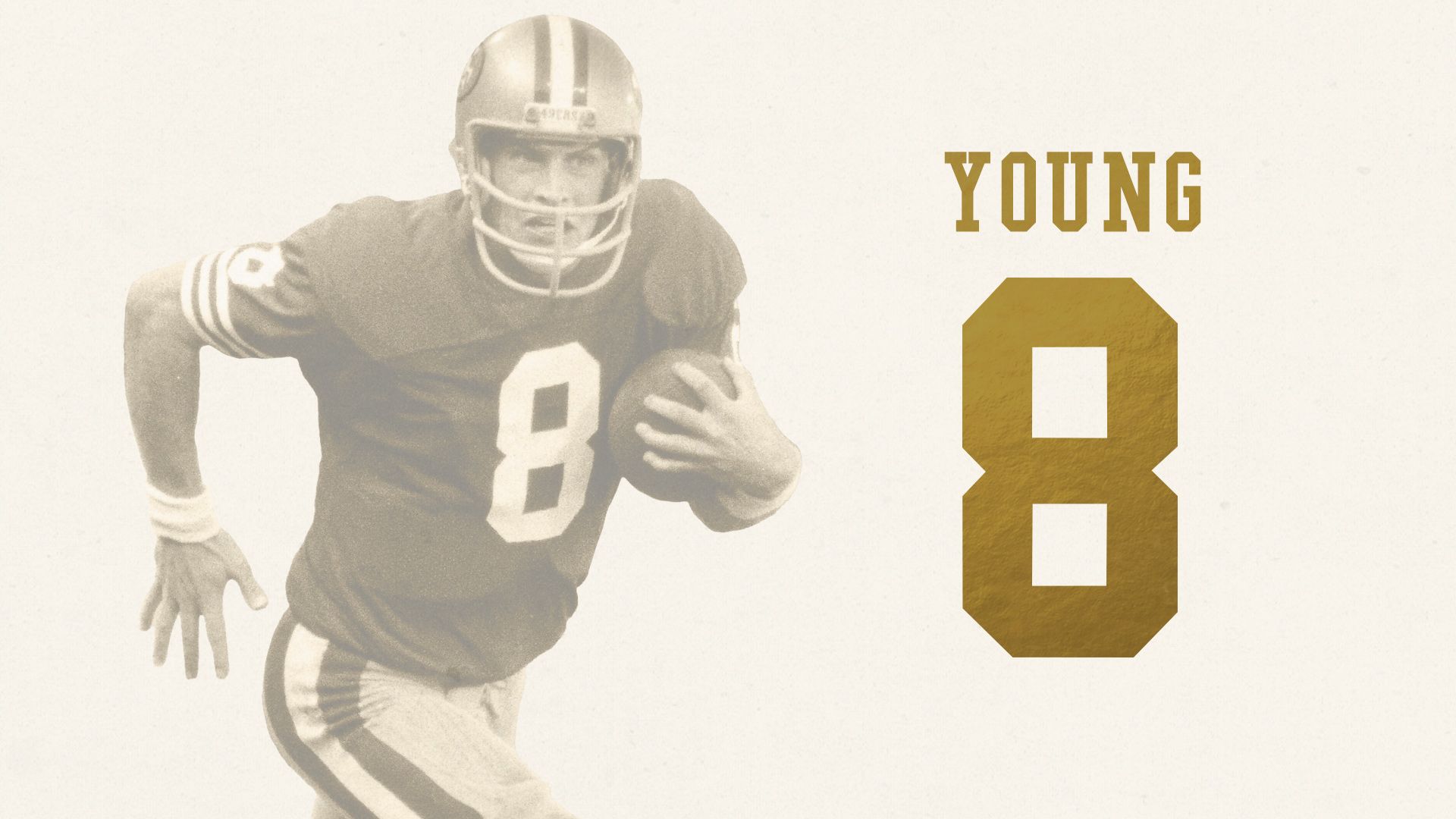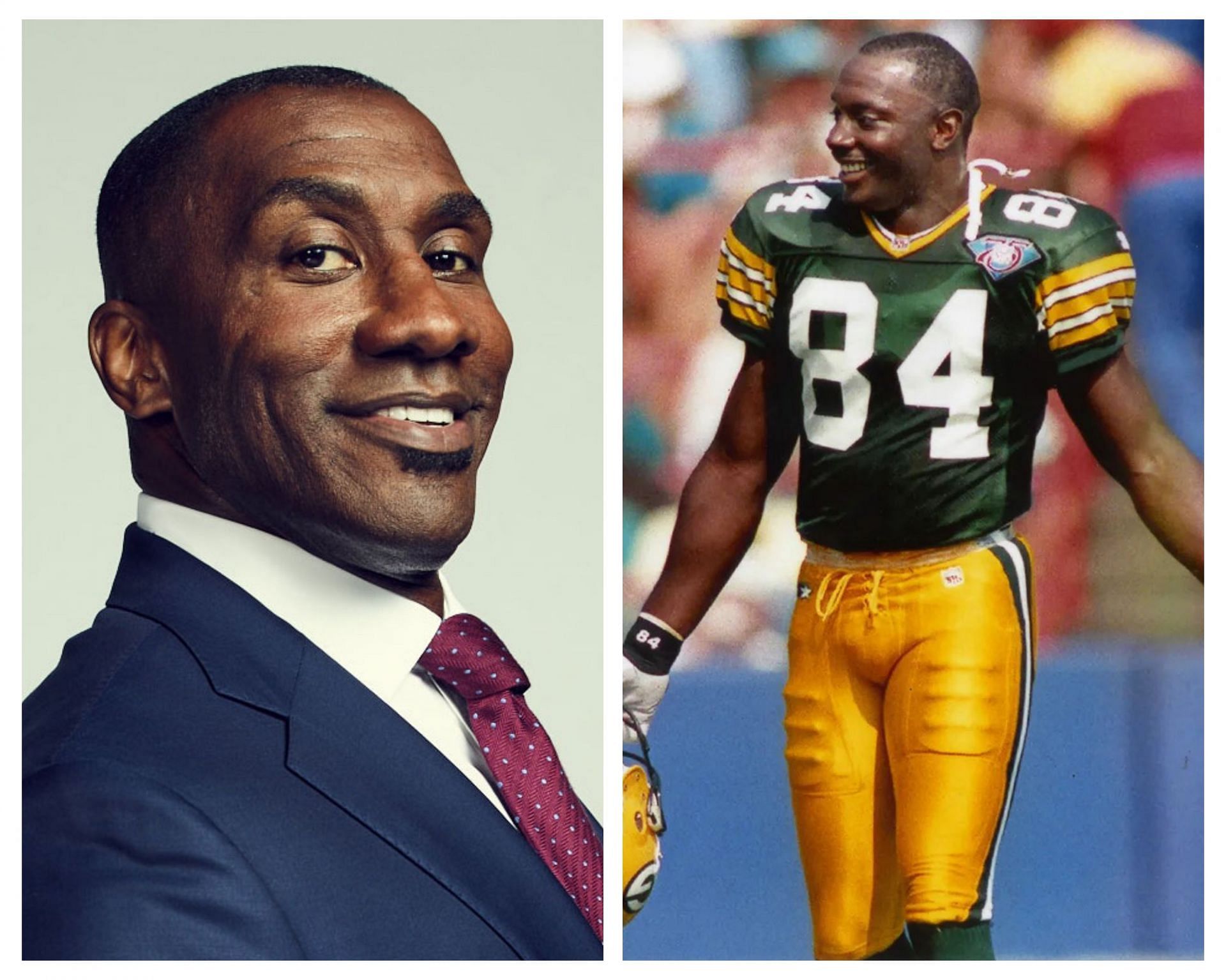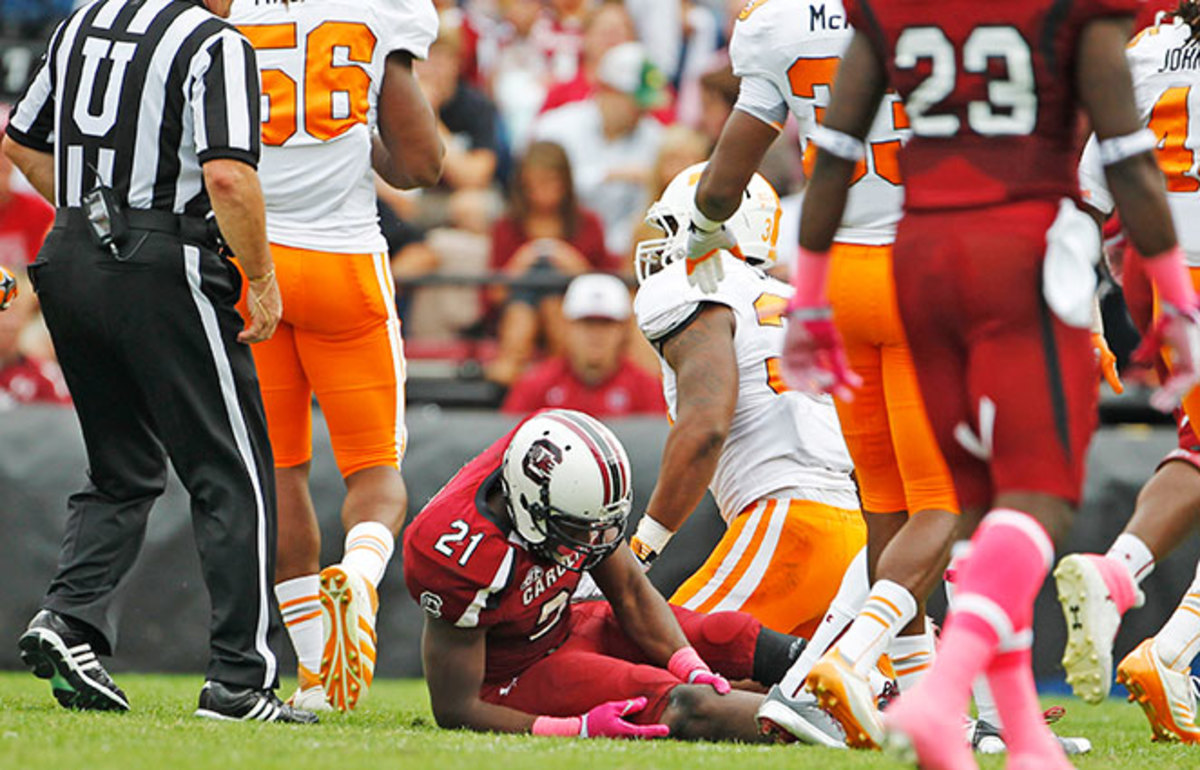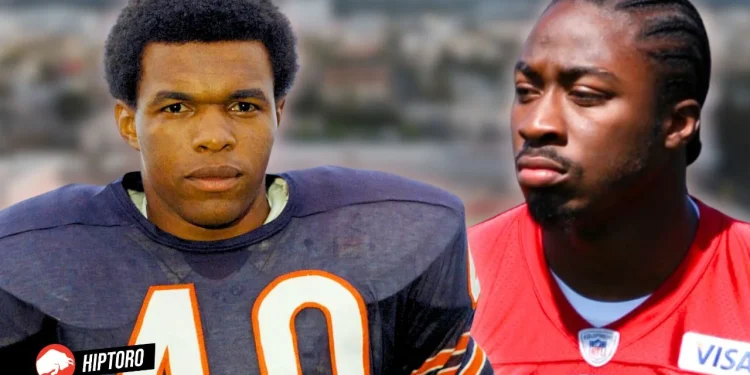The National Football League (NFL) is a grueling arena where athletes push their bodies to the limit. Unfortunately, this high level of physical exertion sometimes leads to severe injuries that can end players’ careers prematurely. In this article, we explore some of the most significant career-ending injuries in the history of the NFL, shedding light on the nature of these injuries, their impact on the players and teams, and the broader implications for the sport.
Career-ending injuries in the NFL serve as sobering reminders of the sport’s inherent risks. These incidents not only change the course of careers but also shape team dynamics and league policies concerning player health and safety. We will delve into the details of these pivotal moments, examining the events leading up to the injuries, the medical explanations behind them, and the aftermath for the affected players.
Here are the Top 10 Career-Ending NFL Injuries
1. Joe Theismann (1985)
The injury that ended Joe Theismann’s career is perhaps one of the most infamous in NFL history. During a game against the New York Giants, Theismann suffered a compound fracture to his leg after being tackled by Lawrence Taylor. This gruesome injury was career-ending due to the complexity of the fracture and the damage to surrounding tissues.

On November 18, 1985, during a Monday Night Football game against the New York Giants, Washington Redskins quarterback Joe Theismann suffered one of the most horrific injuries in NFL history. The injury occurred as Theismann handed off the ball and then dropped back for a flea-flicker play. Giants linebacker Lawrence Taylor rushed in, tackled Theismann from behind, and fell on his lower right leg, causing it to snap gruesomely at the shin.
The tackle resulted in a compound fracture, where both the tibia and fibula were broken, protruding through his skin. This type of injury is not only severe due to bone damage but also because of the risk of infection introduced by the break in the skin. Immediate medical attention was provided on the field, and Theismann was quickly taken to a hospital.
The physical aftermath of Theismann’s injury involved multiple surgeries and a long, painful rehabilitation process. Despite efforts to return to professional football, Theismann’s mobility and leg strength were severely compromised, leading him to retire at the age of 36. The psychological impact was also significant, as Theismann had to come to terms with the sudden end of his sports career and find a new path in life.
Theismann’s injury had a profound impact on the NFL, spotlighting the need for better protection for quarterbacks. This incident spurred changes in rules regarding tackling and the protection quarterbacks receive during games. It also raised awareness about the importance of immediate and advanced medical care at sporting events.
Joe Theismann himself transitioned into broadcasting, where he has had a successful career. He has also been involved in numerous initiatives related to sports safety, using his experience as a platform to advocate for better protective measures in football.
2. Gale Sayers (1971)
Gale Sayers, known for his explosive speed and agility, had his career cut tragically short by a series of knee injuries. Despite an initial recovery, repeated injuries to his right knee led to premature deterioration and eventual retirement. The lack of advanced surgical techniques at the time contributed significantly to the inability to fully restore his knee’s functionality.

Gale Sayers, often known as “the Kansas Comet,” was an electrifying running back for the Chicago Bears. His career in the NFL, though brilliant, was tragically short-lived due to knee injuries. Sayers entered the league in 1965 and quickly established himself as one of the most versatile and formidable players in the game.
His troubles began in 1968 during a game when he tore ligaments in his right knee after being hit by a defender. The injury required extensive surgery, and at that time, knee surgeries were not as advanced as they are today. Sayers made an impressive comeback in 1969, leading the league in rushing and earning Comeback Player of the Year honors.
However, the following years saw his knee condition deteriorate, largely due to repeated injuries and the wear and tear of the game. In 1970, Sayers suffered another blow to the same knee, further damaging the ligaments and cartilage. Despite his determination and strenuous efforts to return, his knee never fully recovered, which drastically affected his agility and speed. By 1971, it was clear that his career was over, and he retired from professional football.
The legacy of Gale Sayers in terms of NFL policy and player health is significant. His career, marked by dazzling highs and devastating lows, highlighted the need for improved player health management and better surgical techniques. His situation underscored the critical importance of knee health in sports, influencing both medical practices around sports injuries and the development of protective gear designed to reduce the risk to players.
Post-retirement, Sayers dedicated himself to helping others, particularly through educational and philanthropic efforts. He also worked in the athletics department at his alma mater, the University of Kansas, and continued to be involved in various charitable activities.
3. Bo Jackson (1991)
Bo Jackson, the only athlete to be named an All-Star in both baseball and football, suffered a devastating hip injury while playing for the Los Angeles Raiders. This injury led to avascular necrosis, which is the loss of blood supply to the bone, causing the bone tissue to die and leading to severe arthritis.
Bo Jackson, a phenomenal athlete known for his careers in both Major League Baseball (MLB) and the National Football League (NFL), suffered a catastrophic hip injury that abruptly ended his NFL career. The injury occurred on January 13, 1991, during a playoff game between Jackson’s Los Angeles Raiders and the Cincinnati Bengals. While being tackled, Jackson was pulled down awkwardly, dislocating his hip. The true severity of the injury wasn’t immediately apparent; however, it soon became clear that Jackson had suffered a far more devastating injury.

The dislocation led to a lack of blood flow to the hip joint, a condition known as avascular necrosis (AVN). AVN leads to the death of bone tissue due to the interrupted blood supply and eventually causes the joint’s articular surface to collapse if untreated. For an athlete, especially one who relied heavily on his physical prowess and explosive speed like Jackson, this diagnosis was particularly dire.
Despite attempts to manage and treat the condition, including hip replacement surgery, the damage to Jackson’s hip was too severe for him to continue his NFL career. He did, however, manage to return to play baseball for a few more seasons, a testament to his incredible athletic ability and determination, but he never played football again.
Bo Jackson’s injury highlighted the potential severity of sports-related injuries and the importance of swift and accurate diagnosis and treatment. It led to increased scrutiny and advancements in the treatment of sports injuries, particularly those involving joint dislocations and bone health. The NFL and other sports leagues began to implement more rigorous health screenings and developed protocols for the management of similar injuries to try to prevent long-term consequences for the athletes.
Post-NFL, Bo Jackson has been involved in various business and charitable endeavors. He remains a celebrated figure in the sports world, not only for his athletic accomplishments but also for his resilience in the face of a career-ending injury. His legacy is often cited in discussions about multi-sport athletes and the physical demands of professional sports.
4. Nick Collins (2011)
Green Bay Packers safety Nick Collins was on track for a Hall of Fame-worthy career when he sustained a neck injury during a game against the Carolina Panthers. The injury involved damage to his C3 and C4 vertebrae and was severe enough to warrant retirement as a precaution against further life-threatening injuries.

Nick Collins, a former safety for the Green Bay Packers, had his promising NFL career cut short by a devastating neck injury. In September 2011, during a regular season game against the Carolina Panthers, Collins was involved in a routine tackle that went tragically wrong. He made a play on an interception and while returning the ball, dove to tackle an opponent and subsequently suffered a severe neck injury involving his cervical vertebrae.
The injury was to his C3 and C4 vertebrae, critical parts of the spinal column that protect the spinal cord and support the neck. The damage was severe enough that despite surgical interventions and rehabilitation, the risk of permanent paralysis or more severe injury if he returned to play was too high. After consultations with several top spinal specialists, Collins made the difficult decision to retire from professional football at the age of 28.
Collins’s injury was a stark reminder of the dangers NFL players face every time they step onto the field. His case became a focal point in discussions about the adequacy of NFL equipment, particularly helmets and neck protection. It also spurred further research into better
5. Steve Young (1999)
San Francisco 49ers quarterback Steve Young’s career ended after he suffered his seventh documented concussion. Young was known for his dynamic play, but repeated head trauma raised serious concerns about his long-term health, ultimately leading to his decision to retire.
Steve Young, the Hall of Fame quarterback for the San Francisco 49ers, experienced a series of concussions throughout his career that ultimately led to his retirement. Young’s final concussion, which occurred during a 1999 game against the Arizona Cardinals, was his seventh documented concussion and arguably the most severe. This incident highlighted the cumulative impact of repeated head trauma, which was becoming a significant concern in the NFL.

During the game, Young was hit hard and went down, suffering what would later be diagnosed as a grade-three concussion—the most severe type. This type of concussion causes a loss of consciousness and, in Young’s case, significant disorientation and memory issues post-injury. The long-term risks of returning to play after multiple concussions, including the potential for permanent brain damage and increased susceptibility to further concussions, led to Young’s decision to retire from professional football.
Steve Young’s case became a critical turning point in how the NFL and the public perceived and handled concussions. His injury and subsequent retirement accelerated efforts within the league to better understand head trauma, leading to the implementation of more stringent concussion protocols. These protocols aim to ensure that players receive appropriate evaluation and do not return to play prematurely.
Post-retirement, Young has been an advocate for research into brain injuries and has participated in various initiatives aimed at improving safety in sports. His experiences have helped raise awareness about the seriousness of concussions, not only in professional sports but also in youth sports activities.
6. Sterling Sharpe (1994)
A neck injury ended the career of Green Bay Packers wide receiver Sterling Sharpe during the prime of his career. The injury involved the cervical spine, a critical area that supports the head and connects it to the body, posing high risks for paralysis.
Sterling Sharpe, a five-time Pro Bowl wide receiver for the Green Bay Packers, saw his career abruptly end due to a neck injury sustained in 1994. During a game, Sharpe took a normal hit that resulted in a severe neck injury, diagnosed as a fractured vertebra. This type of injury is particularly dangerous because it involves the spinal column, which houses the spinal cord responsible for transmitting nerve signals from the brain to the rest of the body.

The risk of paralysis was too high for Sharpe to continue playing without risking permanent damage. Thus, at the peak of his career, and despite his desire to continue playing, he was forced into early retirement. The loss of Sharpe was not only a blow to the Packers but also to the NFL, as he was one of the most talented receivers at the time.
Sharpe’s injury contributed to an evolving understanding within the NFL regarding the seriousness of neck injuries and the long-term health of players. It prompted improvements in protective gear, particularly in technology enhancements in helmets and neck collars designed to prevent similar injuries.
After his retirement, Sharpe transitioned to a successful career in sports broadcasting, where he has been able to use his platform to advocate for player safety and raise awareness about the dangers of playing through injuries.
7. Michael Irvin (1999)
Dallas Cowboys Hall of Fame wide receiver Michael Irvin suffered a cervical spinal cord injury during a game against the Philadelphia Eagles. This injury was particularly severe because it affected the spinal cord at the cervical level, leading to temporary paralysis and ending his illustrious career.
Michael Irvin, a legendary wide receiver for the Dallas Cowboys, experienced a career-ending injury during a 1999 game against the Philadelphia Eagles. Irvin was tackled and hit head-first into the ground, compressing his cervical spinal column and temporarily paralyzing him on the field. This injury was diagnosed as a cervical spinal cord contusion, a severe form of spinal injury that significantly impacts motor and sensory functions.

The injury did not lead to permanent paralysis, thankfully, but the risk of recurring damage and potential long-term disability if he continued to play was too great. After extensive evaluations, the decision was made for Irvin to retire from professional football.
Irvin’s injury underscored the physical risks inherent in football and spurred further discussions and changes in NFL safety protocols, particularly relating to neck and spinal injuries. His case highlighted the need for immediate and conservative care following any spinal trauma and led to enhanced medical standards at games for dealing with such injuries.
Post-injury, Michael Irvin also transitioned into sports broadcasting, where he has been a vocal advocate for player safety. His personal experience has lent credibility to his calls for enhanced protective measures and better post-career medical support for athletes.
8. Daunte Culpepper (2006)
Though not immediately career-ending, Daunte Culpepper’s major knee injury in 2005, which included damage to three major ligaments (ACL, MCL, and PCL), significantly hampered his ability to perform at an elite level. Multiple comebacks were attempted, but he never regained his pre-injury form and retired shortly thereafter.
Daunte Culpepper, a quarterback known for his powerful arm and mobility, experienced a drastic turn in his career due to a severe knee injury. In 2005, while playing for the Minnesota Vikings, Culpepper suffered a catastrophic injury to his knee during a game against the Carolina Panthers. This injury involved tearing three of the four major ligaments in his knee: the anterior cruciate ligament (ACL), the medial collateral ligament (MCL), and the posterior cruciate ligament (PCL).

The complexity of this injury is significant because the knee joint relies on these ligaments for stability and smooth movement. Damage to multiple ligaments not only requires extensive surgery but also a long and uncertain rehabilitation period. Culpepper underwent multiple surgeries and extensive rehab, but the injury permanently affected his ability to perform at an elite level.
Culpepper’s injury highlighted the challenges of recovering from multi-ligament injuries and the uncertain nature of such recoveries in the NFL. His attempts to return to form included stints with several teams including the Miami Dolphins, Oakland Raiders, and Detroit Lions. Despite these efforts, he never regained his pre-injury performance level and eventually retired.
The NFL community took note of Culpepper’s situation, which influenced discussions about player health and safety, particularly regarding the care and rehabilitation of major joint injuries. It spurred improvements in both surgical techniques and rehabilitation protocols, aiming to enhance recovery outcomes for athletes with similar injuries.
Post-retirement, Culpepper has remained relatively private, focusing on personal ventures and maintaining a low profile in the sports world. His case continues to be studied as an example of the impact of severe knee injuries on NFL quarterbacks, emphasizing the importance of preventive measures and advanced therapeutic techniques.
9. Marcus Lattimore (2013)
Despite never playing a regular-season game, Marcus Lattimore’s NFL career ended due to severe knee injuries sustained in college. His injuries, which included tearing the ACL, MCL, and PCL, were so severe that, despite being drafted into the NFL, he chose to retire without playing a single professional game.
Marcus Lattimore, a highly promising running back entering the NFL, faced a heartbreaking end to his career before it could truly begin. His troubles started in college at the University of South Carolina, where he suffered two severe knee injuries. The second injury was particularly brutal, involving a dislocation and tears to several ligaments in his right knee.

These injuries were so severe that they jeopardized Lattimore’s ability to ever play football at a professional level. Despite being drafted by the San Francisco 49ers in 2013, he never played in an NFL game. After two years of attempting to recover and make it onto the field, Lattimore announced his retirement from professional football, citing the ongoing physical limitations and risks as the primary reasons.
Lattimore’s situation was a stark reminder of how quickly a promising career could be derailed by injuries. His case influenced the NFL’s approach to college player injuries and draft strategies, with teams becoming more cautious and investing more in medical evaluations. It also highlighted the advancements needed in injury prevention and rehabilitation, especially for severe knee injuries.
After leaving the NFL, Lattimore returned to the University of South Carolina to complete his degree and has since been involved in mentoring young athletes and working in community outreach programs. He also established a foundation focused on helping youth achieve success through sports and education, leveraging his experiences to positively impact others facing challenges.
10. Dennis Byrd (1992)
New York Jets defensive lineman Dennis Byrd was paralyzed temporarily after colliding with a teammate, causing a neck injury that fractured his spinal column. Miraculously, Byrd regained the ability to walk but never played football again.
Dennis Byrd, a defensive lineman for the New York Jets, suffered a catastrophic spinal injury that initially left him paralyzed. The injury occurred during a 1992 game when Byrd collided head-on with a teammate, causing a fracture in his cervical spine. This injury was life-altering, threatening not just his career but his ability to walk.

Miraculously, Byrd defied the initial grim prognosis. After extensive rehabilitation, he regained the ability to walk, although he never returned to professional football. His recovery became a source of inspiration across the sports world and beyond, symbolizing hope and determination.
Byrd’s injury led to increased focus within the NFL on tackling techniques and spinal injury prevention. It also spurred advancements in the medical treatment and rehabilitation of spinal injuries, improving outcomes for other players who suffered similar traumas.
Following his recovery, Byrd became a motivational speaker and author, sharing his story to inspire others facing difficult challenges. His legacy is not only marked by his resilience and recovery but also by his impact on safety improvements in the NFL.
These stories of career-ending injuries in the NFL offer powerful lessons about resilience, medical advancement, and the ever-present need for improved safety measures in sports. Each narrative not only chronicles personal tragedy and triumph but also contributes to the ongoing dialogue on athlete health and career sustainability in high-impact sports.
These stories highlight the unpredictable and often tragic nature of sports injuries in the NFL. Each case not only ended a promising career but also raised awareness and led to improvements in the treatment and prevention of sports injuries. As we continue, let’s explore how these injuries affected team dynamics, NFL policies, and the personal lives of the players involved.









